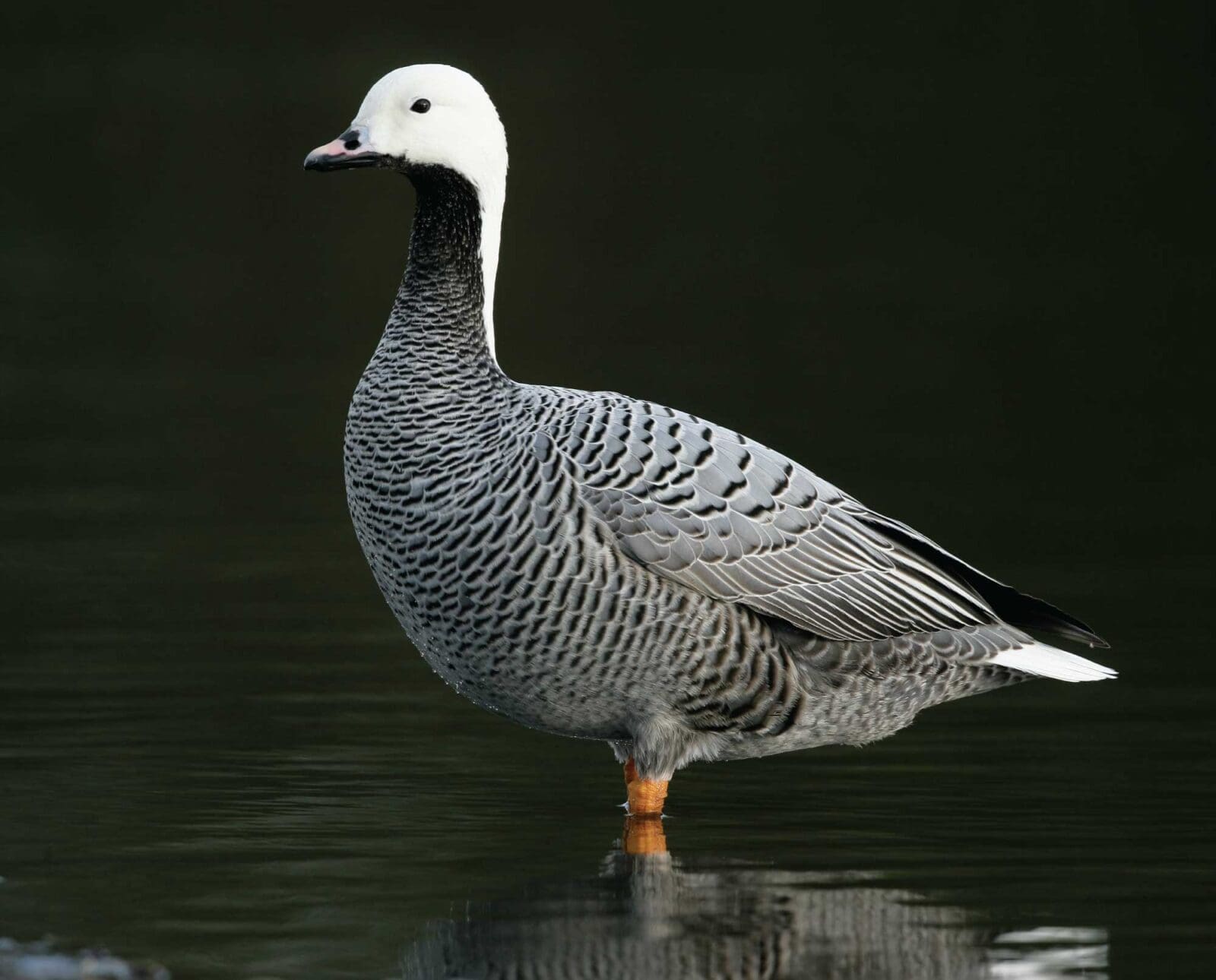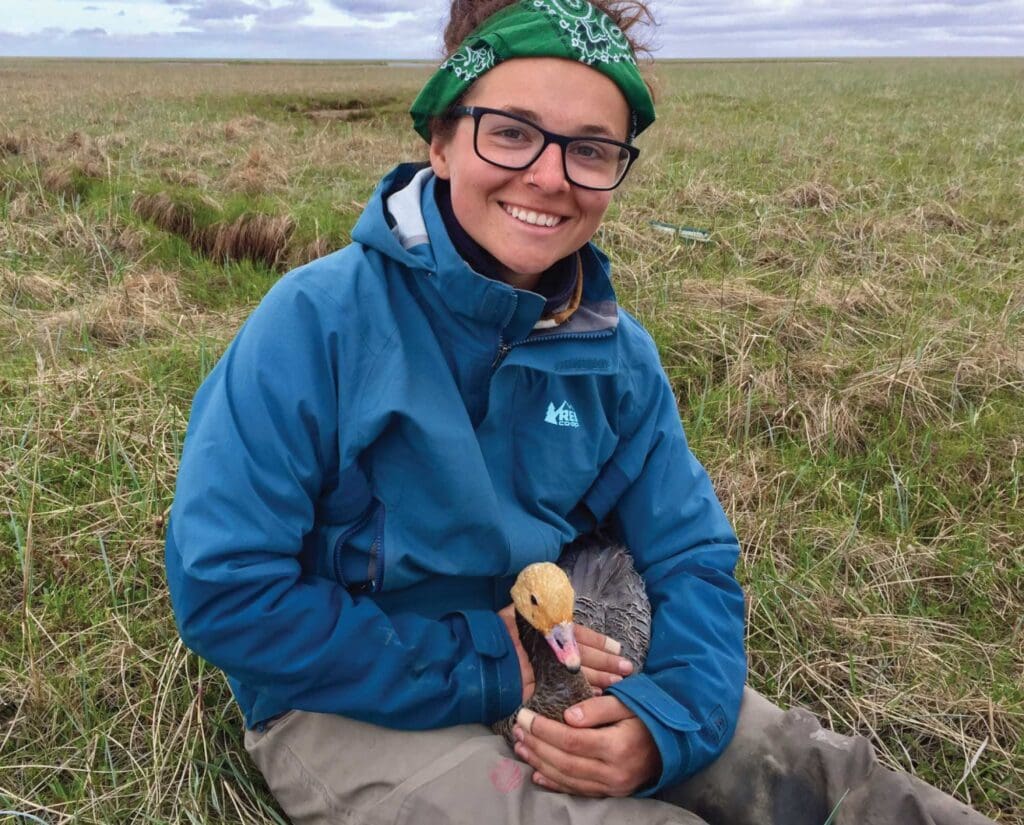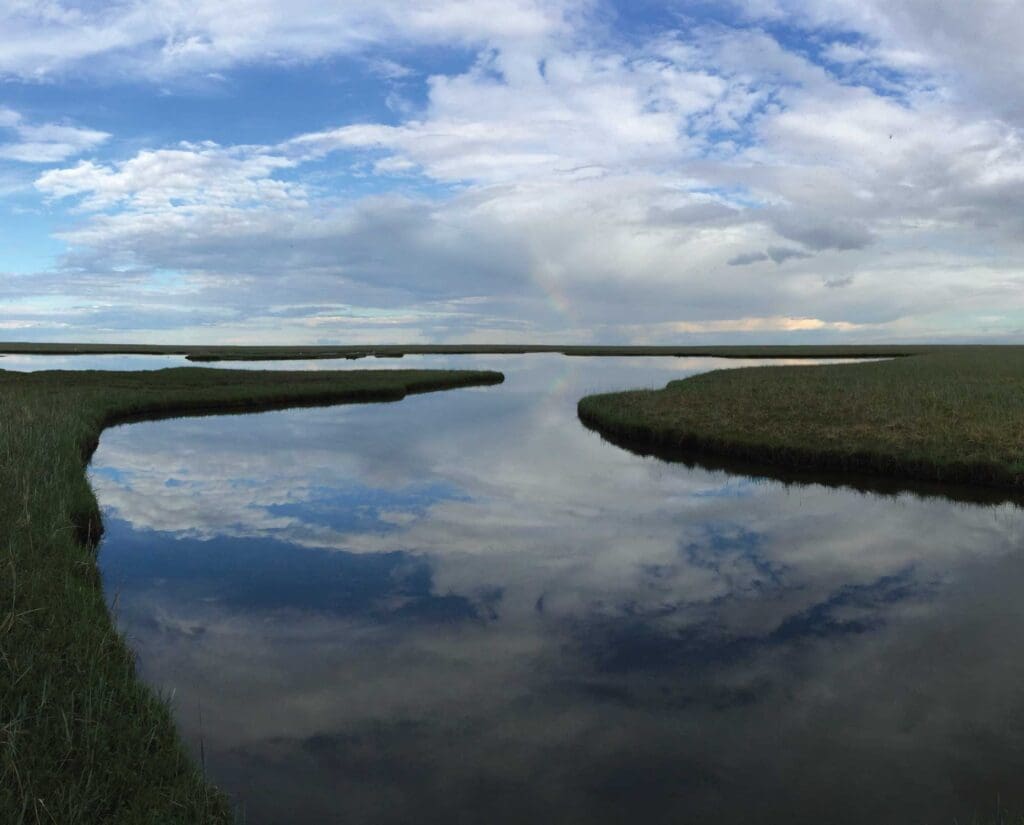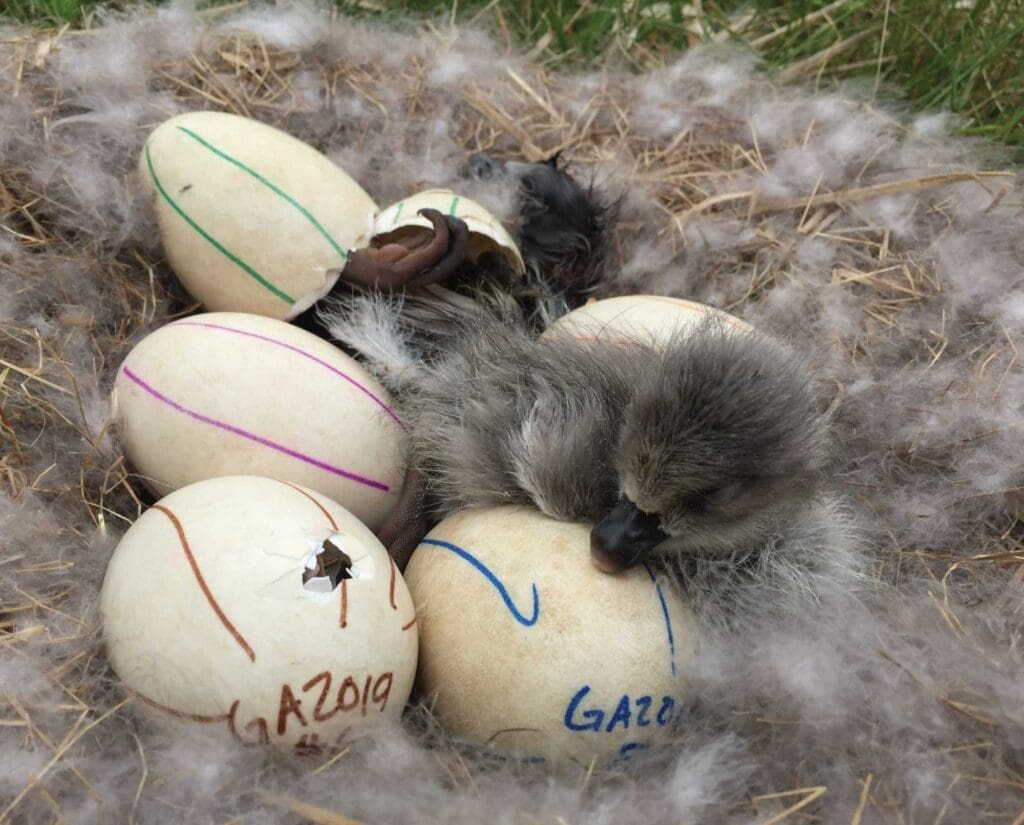Home » Waterfowl Hunting » Emperor Geese: Habitat, Life History, and Hunting
Emperor Geese: Habitat, Life History, and Hunting
- Climate Change Impact (Audubon) | +1.5°C - 100% Range Lost | +3.0°C - 100% Range Lost

Gabby Zaldumbide is Project Upland's Editor in Chief. Gabby was…
Life history, biology, and habitat information for the arctic’s most charismatic goose
The emperor is one of the handsomest of the American geese.
George Bird Grinnell
The Yukon-Kuskokwim Delta, located in western Alaska along the Bering Sea, is a bird paradise. Arctic terns swarm the sky, flying low over flat floodplains, mobbing anything threatening their nests. Spectacled eiders lounge on the muddy banks of the estuary. Red-neck phalaropes twitter in shallow waters, while greater white-fronted geese honk and feed in the swaying grasses. Familiar sandhill cranes identify new nesting grounds far from Wisconsin, where restoration ecologists recovered them from near extinction. However, the flashiest bird of all is the silvery, pastel-beaked emperor goose.
During the summer of 2017, the U.S. Geological Survey hired me to collect data on emperor geese for a month. After flying out from Anchorage to Bethel to Chevak and enduring a four-hour boat ride through the sea, I watched dunlins zip over me while I waited patiently in a tidal slough near the Manokinak River. I had just bumped an incubating female emperor goose off her nest, set a bownet trap, camouflaged it, and jogged my pull line back to my hiding place. Before long, the female waddled back to her nest. She was curious about the new pile of grass on the side of her nest, but ultimately, she wasn’t alarmed and went right back to incubating her eggs. After I gave her a moment to settle in, I jerked my pull line.
The free side of my bownet launched itself over the goose; she was trapped. Her well-being and safety were my highest priorities as I sprinted in my waders and oversized hiking boots through mosquito clouds and humid air to get to her. Upon arrival, I placed firm hands over her wings and body to keep her wings from getting tangled in the trap. I released her, tucking her head under her wing to calm her down while I waited for my colleague to catch up to me with our data collection supplies. This female would have her third primary measured, get a leg band mounted above her webbed foot, get weighed, and have blood drawn from the long vein in her neck before being released.

Spending the summer solstice in the far reaches of western Alaska was unlike anything I had ever experienced. I had never witnessed a landscape so entirely covered in birds, let alone 24-hour sunshine. The beauty of emperor geese was imprinted in my mind, and I treasured every moment I got to observe their life history in action. Those smooth white eggs hatched into dusty gray goslings, peeping and plodding behind their mothers, ensuring that this near-threatened seabird lasts for at least a few more generations.
Where You Can Find Emperor Geese
Emperor geese are short to medium-distance migrants. As previously mentioned, emperor geese are predominately found along Alaska’s western shores in the summer and the Aleutian Islands in the winter. A few rare stragglers have been recorded wintering in California and Hawaii. Emps are also located across the Bering Sea in the far northeastern reaches of Russia. During the summer breeding season, they live in the Chukotka Peninsula. During the nonbreeding winter season, they live in the Kamchatka Oblast. Emps are also known for a unique migration coined the “molt migration,” during which they fly to Chukotka, molt their flight feathers, and are flightless until new feathers grow in.

In these locations, emps prefer low-lying tundra grasslands featuring brackish water. They feed in tidal sloughs, mudflats, lagoons, rocky shorelines, and marshes. Berries and marsh plants comprise most of their summertime diets, and crustaceans and aquatic vegetation fill their bellies during the winter.
Emperor Goose Life History
Emperor geese (Anser canagicus), lovingly called emps, are among the rarest goose species in the United States. They are stocky, short-necked geese with white faces and necks and silvery gray bodies. Their legs and feet are bright orange, and their bills are a dusty pink and pastel blue, similar to a coquina shell.
When spring arrives, monogamous pairs select a place to build their next nest. Emps don’t mate until they are at least three years old. According to the Alaska Department of Fish and Game, “90 percent of the world’s population of emperor geese nest on the Yukon-Kuskokwim Delta.” Based on only a few observations of this species, females conduct all the nest-building and incubation activities for their three to five eggs. Males guard the nest and the female from predators, including foxes, gulls, other geese, or humans. Emps prefer to nest in tall, dead grass along landscape features like water lines or on the top of a small rise. Their nests are made up of soft, dry vegetation and down feathers. Similarly to other geese, males, females, and their offspring feed together for the summer.
Like other geese, emps tend to feed on invertebrates and plant material. Because they live in brackish water, critters ranging from aquatic bugs to mussels are on the menu. When they feed on plants, they often probe around the mud for soft shoots and roots. According to the Cornell Lab of Ornithology, plant species they feed on include “creeping alkaligrass, marsh arrowgrass, beach rye, blue lyme grass, beach pea, seabeach sandwort, Fisher’s tundragrass, Hoppner’s sedge and other sedges, black crowberries, eelgrass, and marine algae such as sea lettuce.” As a result of this foraging behavior, they often stain the white feathers on their head and necks red due to the iron oxide in the soil and water.

Emperor Goose Hunting and Conservation in Alaska
Emperor geese populations have wavered in the last 60 years. The U.S. Fish and Wildlife Service (USFWS) surveyed approximately 140,000 birds in 1964. However, this number plummeted to 42,000 geese by 1986. The USFWS is not quite sure why their numbers dropped so swiftly, but they assume it was because of high adult mortality rates and periods of low breeding success. To help protect the species from further population declines, Alaska closed its hunting season in 1986, and subsistence hunting ended in 1987. Fortunately, their population was estimated to be around 98,000 birds in 2015, and the Emperor Goose Management Plan stated that hunting could resume under these conditions. Emperor goose fall and winter hunts and spring and summer subsistence hunts resumed in 2017.
Today, emperor goose hunting is extremely limited. Because they are only found in Alaska within the United States, interested waterfowl hunters can look to the Alaska Department of Fish and Game’s website for more information. ADFG states that permits are required to hunt emperor geese during the fall and winter. Only 25 permits are available for nonresident hunters. Additionally, the state has a quota on emps that cannot exceed 1,000 birds, and there’s an annual limit of one emperor goose per hunter. Additionally, Alaska Native Peoples are authorized to conduct subsistence hunts on emperor geese during the spring and summer because it is “a customary and traditional hunt.” Emps are “an important food source and cultural resource for Alaska Native Peoples where they are referred to as nacaullek, leghlleq, ligliqpak, mitilgruaq, or neqlleq,” according to the U.S. Geological Survey.
In 2022, USGS began emitting radio announcements stating that if you find, shoot, or spot a banded emperor goose, report its band number. Many hunters and Alaskan Native Peoples believed it was illegal to hunt or possess and banded goose; that is not the case. This radio announcement is an effort to clear up some misunderstandings and help USGS gain important migration information about this special, near-threatened species.
It’s incredibly rare for someone to see an emperor goose in their lifetime, let alone have the opportunity to hunt one. However, I can confidently say that traveling to Alaska and taking the time to glass up one of these royal birds is worth it. Plus, you’ll add countless new birds to your life list while you’re searching for them, like spectacled eiders, common eiders, arctic terns, and maybe even a white wagtail if you’re lucky. Hopefully, their all-hands-on-deck state and federal level management techniques and limited hunting opportunities will help this resilient species persist for generations to come.
Gabby Zaldumbide is Project Upland's Editor in Chief. Gabby was born in Maryland and raised in southern Wisconsin, where she also studied wildlife ecology at the University of Wisconsin-Madison. In 2018, she moved to Gunnison, Colorado to earn her master's in public land management from Western Colorado University. Gabby still lives there today and shares 11 acres with eight dogs, five horses, and three cats. She herds cows for a local rancher on the side.



